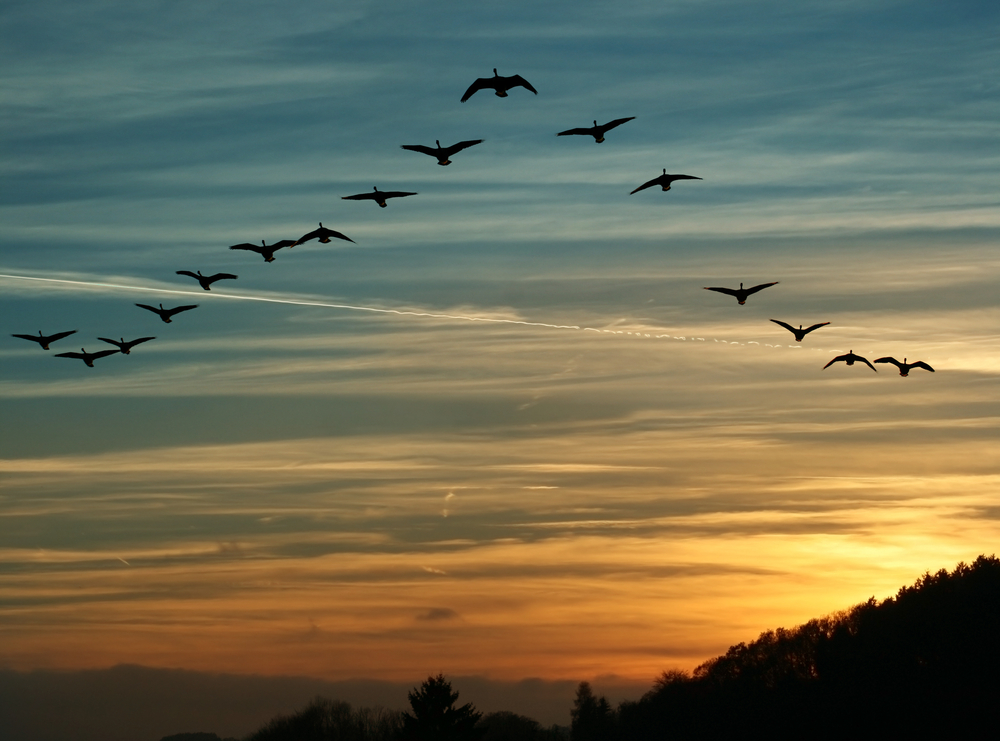
Why do Geese Fly in a V? Understanding the Flight Patterns and Behaviors
When you spot a flock of geese flying overhead, you may have noticed their distinctive V-shaped formation. This flight pattern is not merely a coincidence but a well-organized strategy employed by geese for numerous benefits. In this article, we will explore the fascinating science behind the flight patterns of geese and uncover the reasons behind their iconic V-shaped formations.
The V Formation: Purpose and Advantages:
Geese fly in a V formation for several reasons. Firstly, this arrangement allows for improved energy conservation. As each goose flaps its wings, it creates an uplift for the one following it, thereby reducing the overall energy expenditure of the flock. Secondly, the V-shaped formation enhances communication and coordination between geese during flight. It enables them to maintain visual contact with one another, ensuring a synchronized movement that aids navigation and avoids collisions.
Insights from Research on Geese Flight Behavior:
Scientific studies have revealed intriguing details about the preflight and flight behavior of geese. Geese possess a remarkable ability to navigate accurately across vast distances. Their traditional use of circumscribed nesting, migration, and winter localities is driven by a combination of instinct and learning from older birds. These flight behaviors showcase the adaptability and social intelligence of geese.
Other Bird Flight Patterns:
While the V formation is most commonly associated with geese, other bird species also exhibit diverse flight patterns. The J-shaped echelon pattern, for instance, is observed in species like pelicans and ibises. Birds may adopt different flight arrangements based on factors such as flock size, wind conditions, and the intended objective of the flight.
Migration Patterns and Social Behavior:
Geese migration patterns are strongly influenced by flight formations. As they embark on long-distance migrations, geese rely on the shared effort of the flock to navigate challenging routes and endure the physical demands. The V formation allows them to optimize flight efficiency, conserve energy, and maintain social contact. Communication through honking also plays a crucial role in coordinating the movements of a migrating flock.
Factors Influencing Flight Patterns:
Several environmental factors shape geese flight patterns. Wind currents play a significant role, as geese take advantage of updrafts created by the lead bird in the V formation. Weather conditions, such as wind speed and direction, can influence the shape and stability of the formation. Furthermore, geographical features, such as mountains and large bodies of water, can affect the flight path and alter the formation as geese navigate around obstacles.
Role of Leadership in V Formation:
The V formation is not merely a random arrangement, but it is structured with a designated leader at the front. The leader sets the pace and direction, bearing the brunt of air resistance. Geese take turns leading the flock to distribute the physical effort evenly among the members. By rotating the leader position, geese ensure equal distribution of stress and fatigue, allowing the entire flock to endure long flights more effectively.
Observing and Interpreting Geese Fly Patterns:
For birdwatchers and enthusiasts, geese flight patterns provide valuable insights into bird behavior and environmental conditions. Observing the formation, level of coordination, and the presence of anomalies can offer clues about the health and social dynamics of the flock. Additionally, understanding geese flight patterns is essential for hunters and conservationists, who rely on this knowledge to manage populations and preserve habitats effectively.
Geese flight patterns, particularly the iconic V formation, showcase the remarkable abilities and social intelligence of these birds. The formation not only enhances energy efficiency but also promotes effective communication and navigation. By adapting to environmental factors and displaying unique leadership mechanisms, geese continue to captivate and inspire us with their fascinating flight behaviors. So, the next time you see a V formation of geese soaring across the sky, take a moment to appreciate the marvel of nature's efficiency and cooperation.

Book Your Saskatchewan Waterfowl Hunt Today:
Email or Call us today at 306-941-7676
 Prev Post
Prev Post




